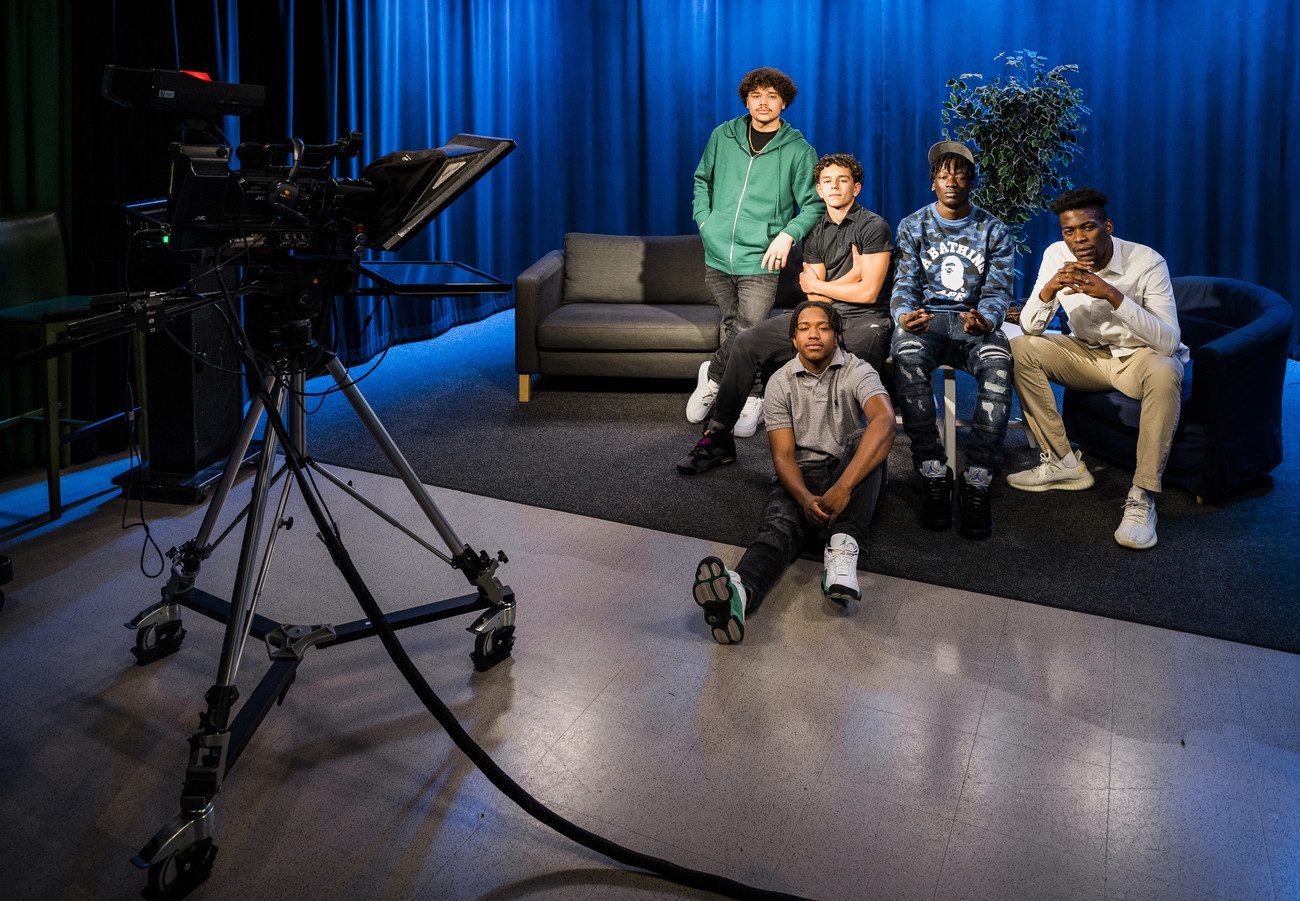SWAMPSCOTT — A video project of four members from the Boys of Color and four senior residents gathered high-school students for an assembly for the first time in almost two years on Monday morning.
Four Swampscott High School students — Alhassan Bangura, 18, Eddie Gomez, 17, Sam Oubala, 15, and Tyler Sanders, 15 — and four senior citizens — Edye Baker, 77, Ralph Edwards, 74, Victoria Wilder, 67, and Sid Novak, 96, — collaborated over the month of February on a video project dedicated to Black History Month.
On Monday, a short documentary video titled “Black History, Our History” was presented to the whole student body of Swampscott High School at its first assembly since the COVID-19 pandemic started.
In an approximately 20-minute-long video, the students interviewed the elders about their experience with racism while growing up, their memories of Martin Luther King Jr.’s “I Have a Dream” speech, the modern civil-rights movement that was sparked by the death of George Floyd in 2020, and the difference a new generation can make.
Swampscott Educational Access TV helped to film the project and high-school students Zachary Stern and Ivy O’Brien helped to produce and edit the documentary. The video is now available for viewing on the Swampscott Public Schools YouTube channel, while all of the interviews will be archived by the Swampscott Public Library.
The collaboration came about when Sabrina Clopton, outreach social worker at the Swampscott Senior Center, connected with Temi Bailey, Room of Color facilitator and advisor to the Boys of Color, who took his students to meet the seniors and brainstorm project ideas.
Boys of Color is an affinity group that helps male students of color feel safe, make connections and build relationships among each other in a predominantly white school, while striving for academic success and achievement of their goals.
“You couldn’t imagine two more divergent populations across the lifespan: teens and the elderly,” said Clopton. “But I feel like this project shows how much there really is in common between the two age groups because both are so underestimated for their real-time value to society.”
The documentary shows that seniors and students can actually give each other a lot, Clopton said.
Each student was matched to a senior to interview based on their personality.
Bangura, who was partnered with Edwards, said it was very easy to talk to his much-older interviewee. He was moved the most by Edwards’ personal memories of growing up in a segregated community in Alexandria, La., and seeing a body of a lynched person on the street on his way to school.
“History is history until you see it in front of your face,” said Bangura.
Gomez was impressed to learn that Novak participated in World War II.
“It is so beautiful how healthy this guy is. He looks like he is still in his 70s,” said Gomez about 96-year-old Novak. “The way he just holds and presents himself; his vision (is) really cool.”
Sanders was surprised to learn that Baker has experienced racism through her biracial granddaughter and saw more change since the death of Floyd.
“Around the time (of the civil-rights movement) she didn’t really see change, but our generation showed her the change,” said Sanders.
Oubala enjoyed talking with Wilder about the civil-rights movement and her childhood in Lynn, where she went to an integrated school and church but was afraid for her mother who made trips to the South.
The students were happy with how the project came out.
“It was just incredible that on the first try we got those perfect demographics because the key part of the project was that we wanted to get different perspectives,” said Bangura. “We got a black female and a black male, as well as a white female and a white male, all to give their different perspectives, which highlighted the different views.”
Sanders said that, for him, it was important that they were bringing awareness to the experience of actual people who lived through the civil-rights movement outside of a history class. The project also allowed him to get closer with his peers and come out of his comfort zone.
“It is a great experience, especially for me, a person who is quiet and shy,” said Sanders.
Oubala said the project gave him the opportunity to talk about race and the history of racism.
“I have always had feelings about this that I have always been trying to express, but I have never had an outlet or (was) given the opportunity to have an outlet to talk about it,” said Oubala.
All of the seniors were impressed with their interviewers, whom they described as prepared, articulate, committed and intense.
“I was really pleased that they were so into it,” said Wilder. “They were so serious about it and they really wanted to do a good job and they did a good job.”
Novak said that it is worthwhile having conversations about racism because it helps people to reach each other and answer each other’s questions.
Baker advised the students to focus on their education and surround themselves with a broad range of people who they could admire for their character and learn from.
Edwards shared the same sentiment.
“Dare to excel; dare to be a good student; dare to be the best that you can,” Edwards said. “This is a serious time and it’s a great opportunity and the need for young people to be serious about what’s going on now and their future.”

